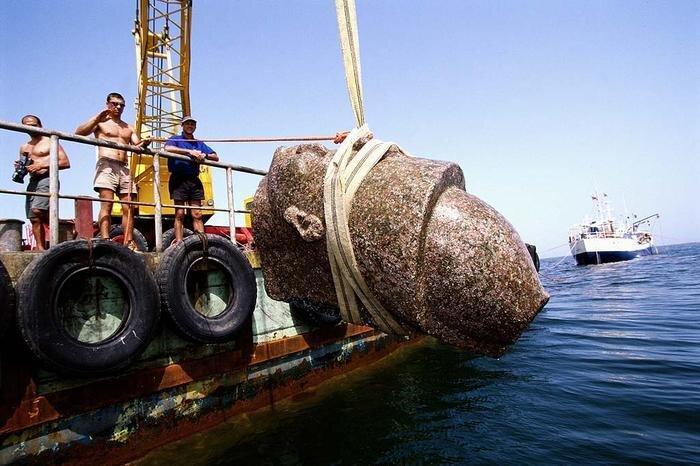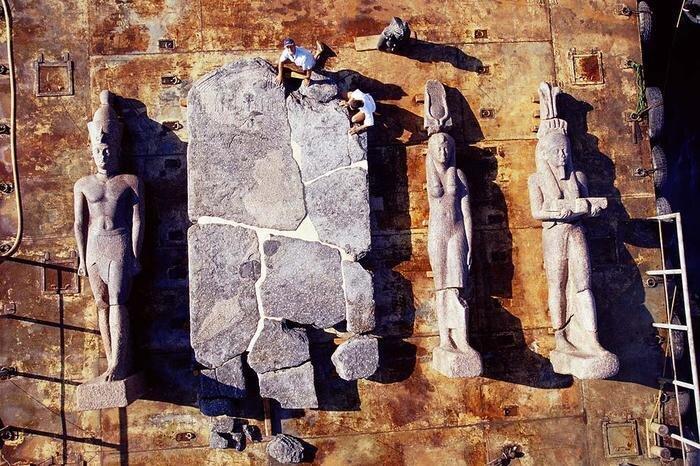The ancient Egyptian city of Heracleion, submerged 1,200 years ago beneath the Mediterranean, was founded around the 8th century BC. Prior to the establishment of the famous Library of Alexandria in 331 BC, it was regarded as Heracleion’s sister city and a major port of entry to Egypt for all ships coming from the Greek world. Its rediscovery in 2000 by archaeologist Franck Goddio and the IEASM (European Institute for Underwater Archaeology) shed new light on Thonis-Heracleion, which had been lost (the city was known to the Greeks as Thonis). Its name was almost erased from the memory of mankind, only preserved in ancient classical texts and rare inscriptions found on land by archaeologists.
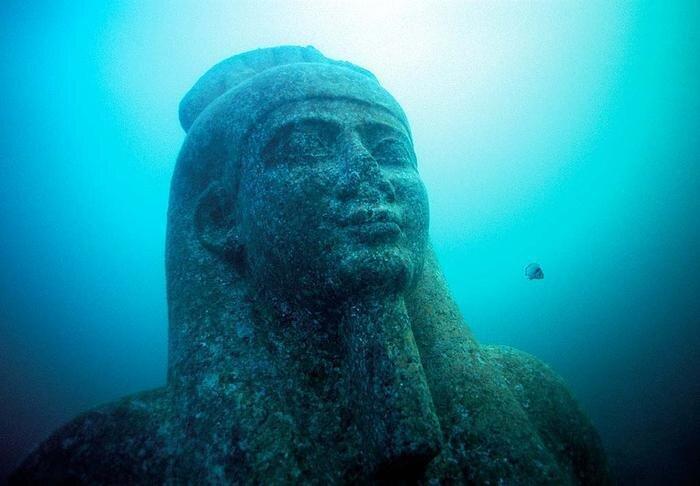
Using his unique surveyed approach utilizing sophisticated technical equipment, Frank Goddio and his team from IEASM were able to locate, map, and excavate parts of the city of Thonis-Heracleion, which lies 6.5 kilometers off today’s coastline around 150 feet underwater. The city is situated within an overall research area of 11 by 15 kilometers in the western part of Aboukir Bay.
Discoveries to date include:
– The remains of more than 64 ships buried in the thick clay and sand that covers the seabed
– Gold coins and weights made from bronze and stone
– Giant 16-foot statues alongside hundreds of smaller statues of minor gods
– Slabs of stone inscribed in both ancient Greek and ancient Egyptian
– Dozens of small limestone sarcophagi believed to have contained mummified animals
– Over 700 ancient anchors for ships
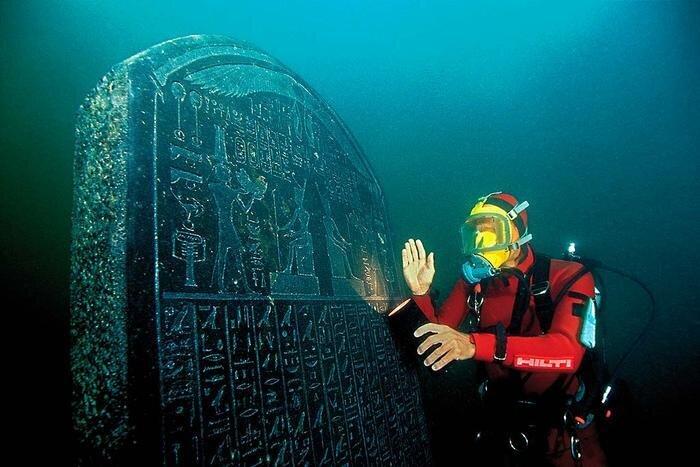
The fashion of Heraclion during the late 4th century BC
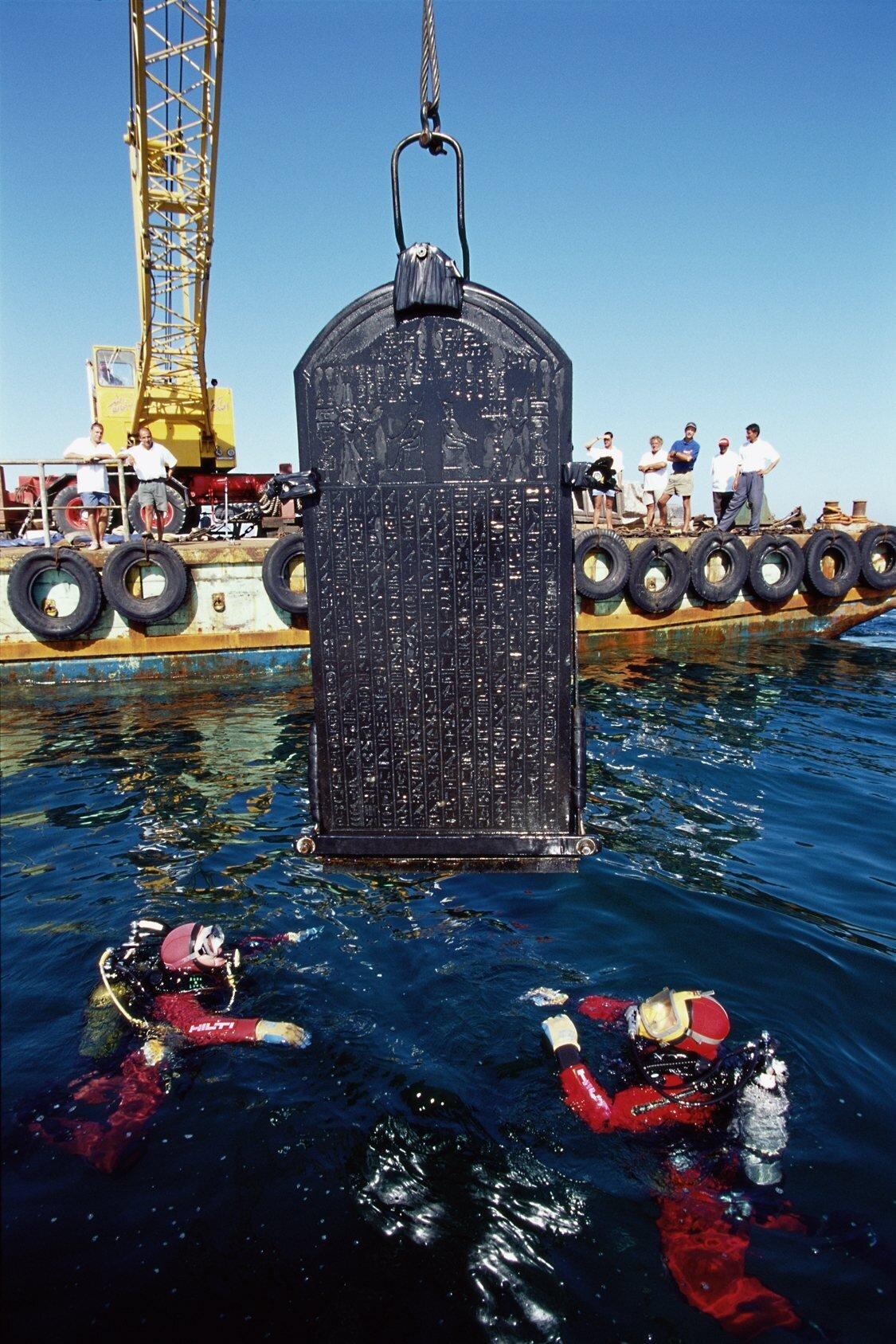
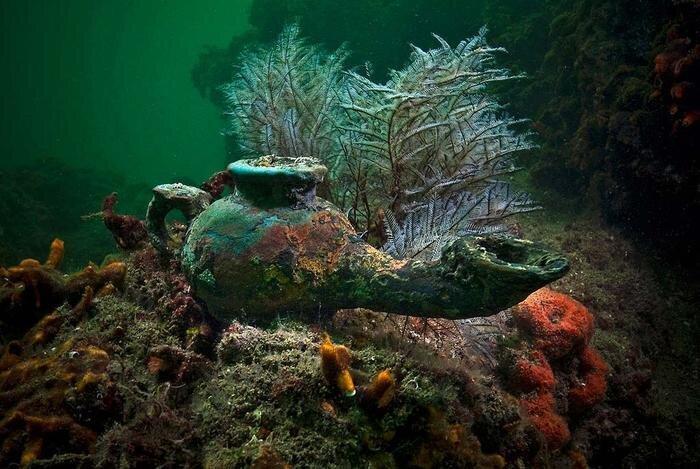
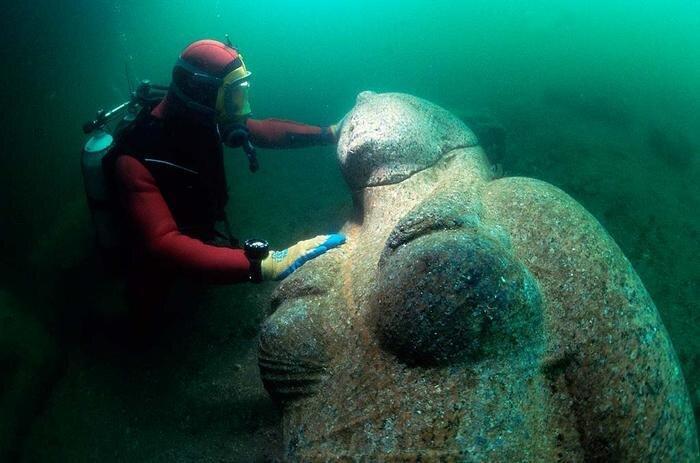
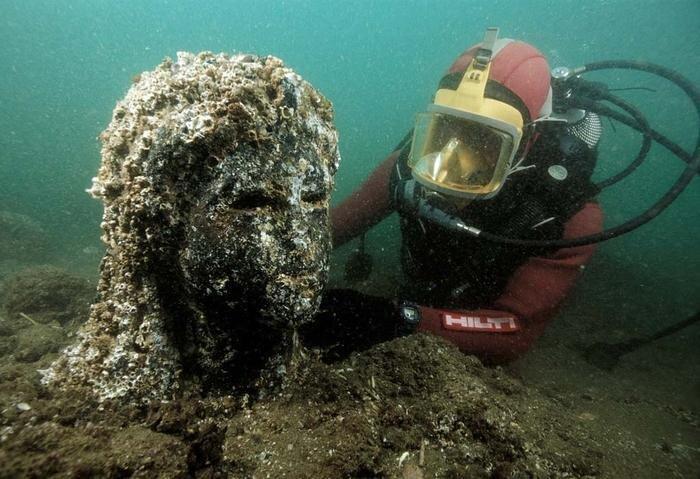
What led to the submergence?
According to research, the site was affected by geological and tectonic phenomena. The gradual movement of subsidence of the soil affected this part of the south-eastern basin of the Mediterranean. The rise in sea level also contributed significantly to the submergence of the land. The International Earth and Applied Sciences Model had geological observations that attributed these phenomena to light by discovering seismic events in the underground geology.
Analysis of the site also suggests liquefaction of the soil. This localized phenomenon can be triggered by the action of a great pressure source on soil with a high clay and water content. The pressure from large buildings, combined with an overall weight of an unusually high flood or a tidal wave, can dramatically compress the soil and force the expulsion of water contained within the structure of the clay. The clay quickly loses volume, creating sudden subsidence.
An earthquake can also cause such a phenomenon. These factors, whether occurring together or independently, may have caused significant destruction and explain the subsidence of Thonis-Heracleion.

